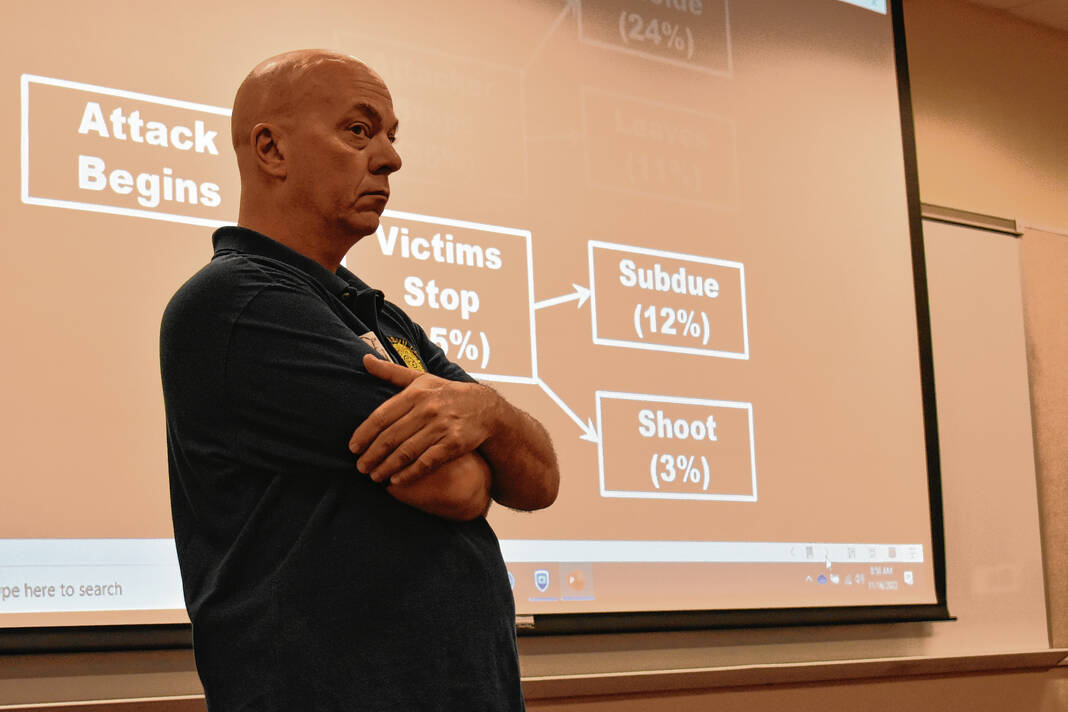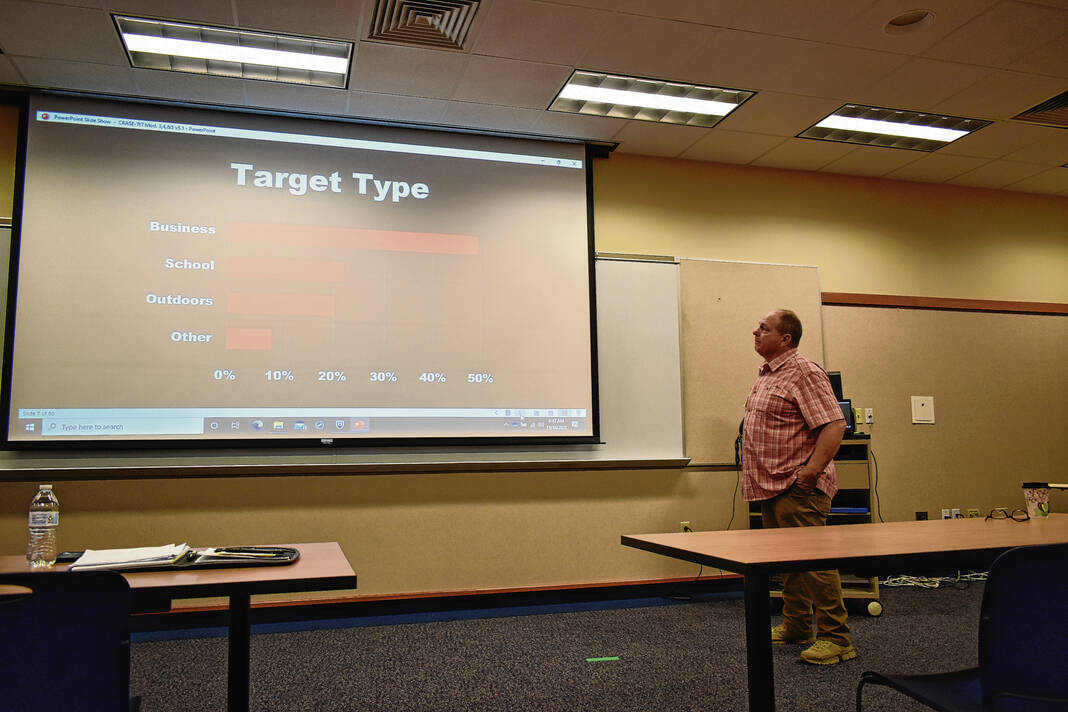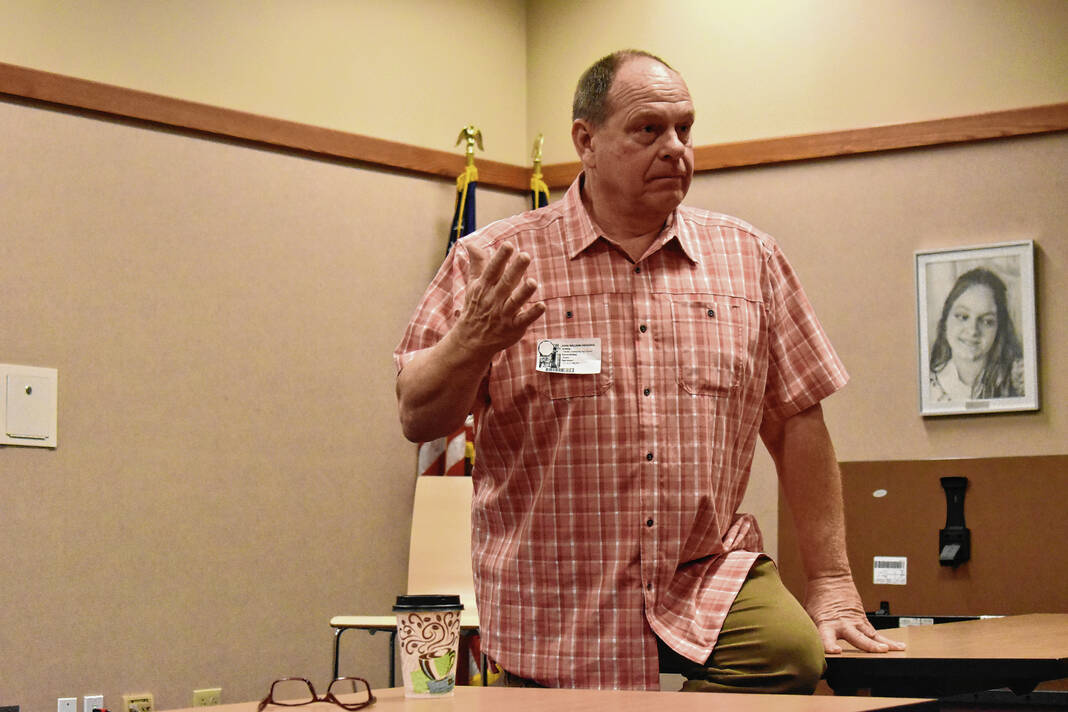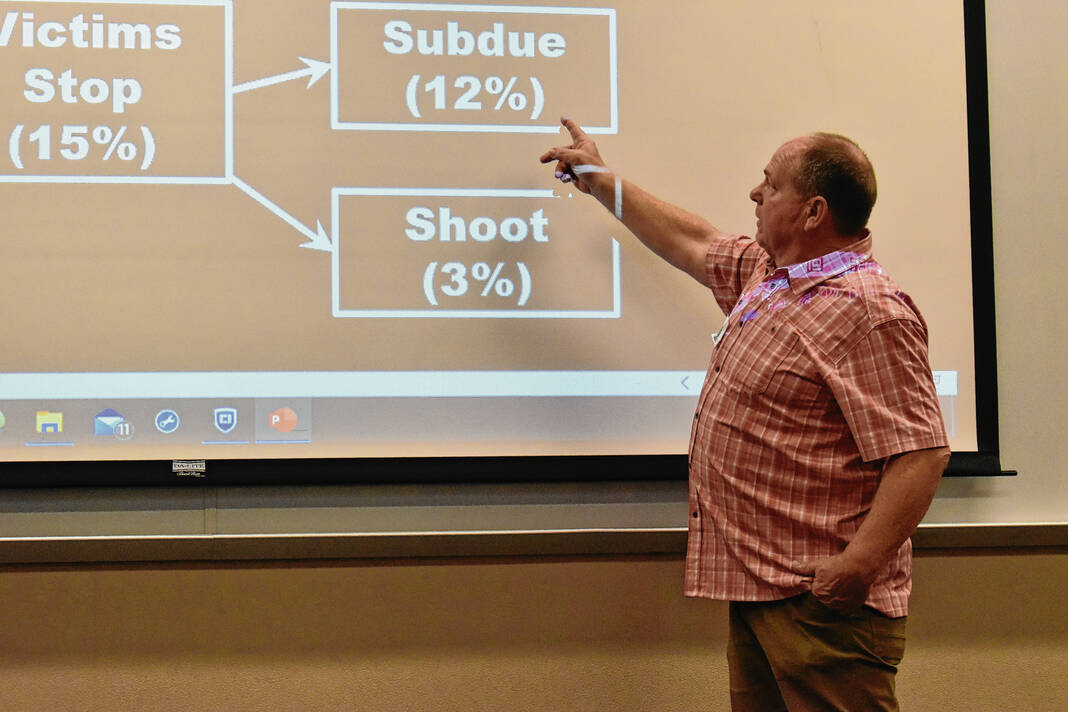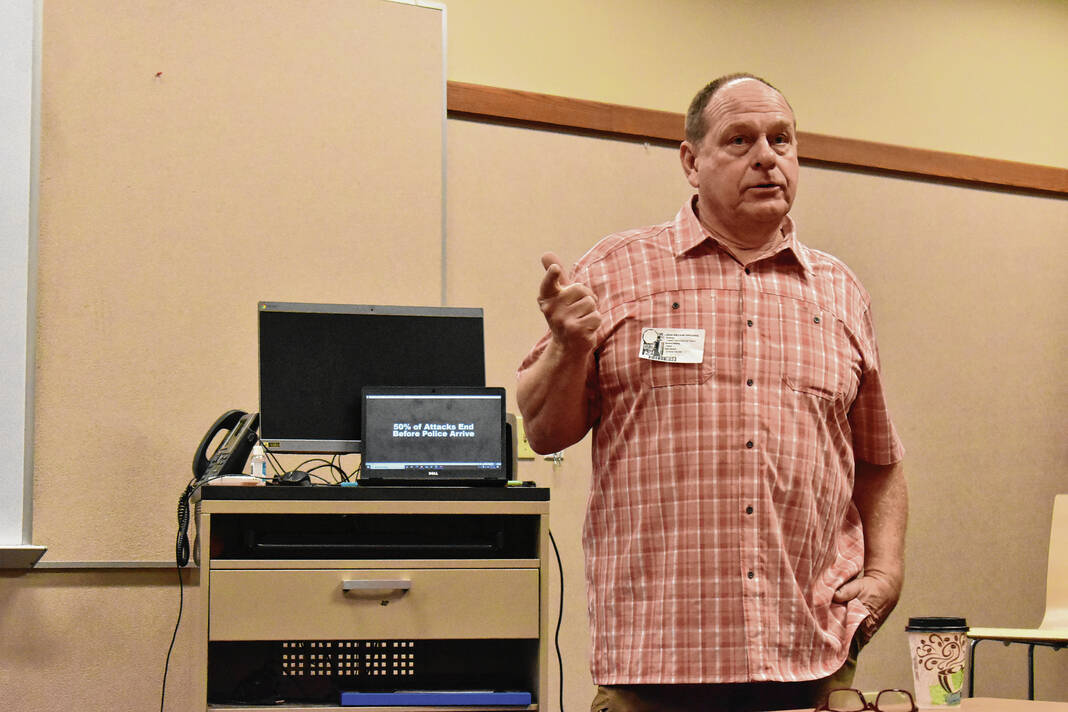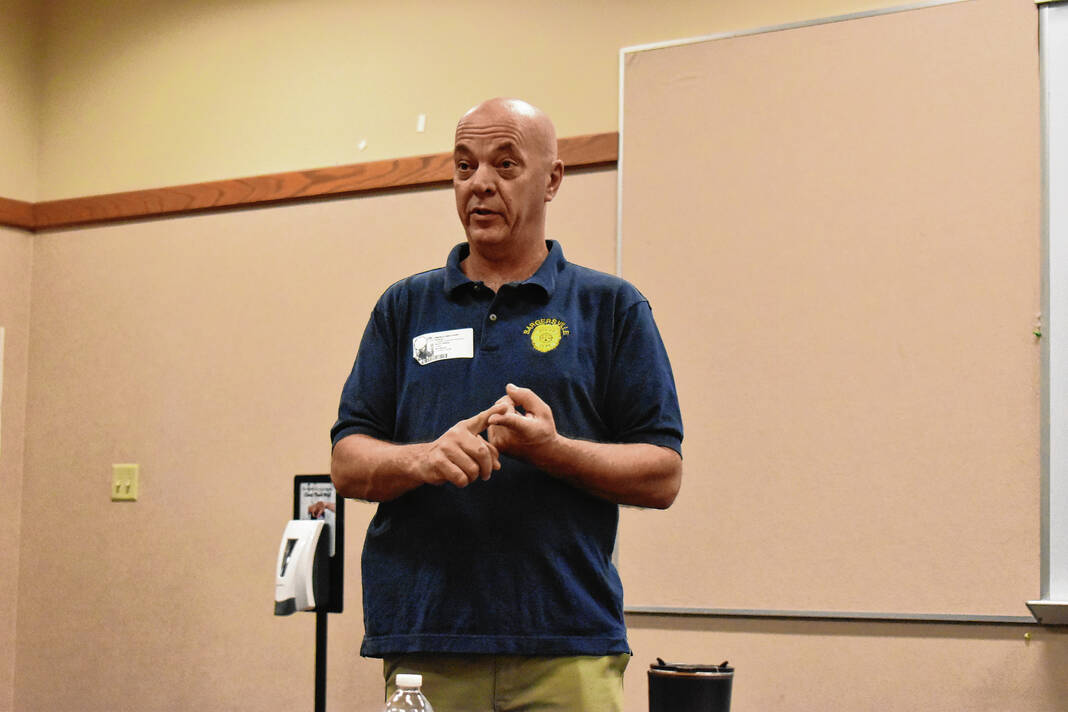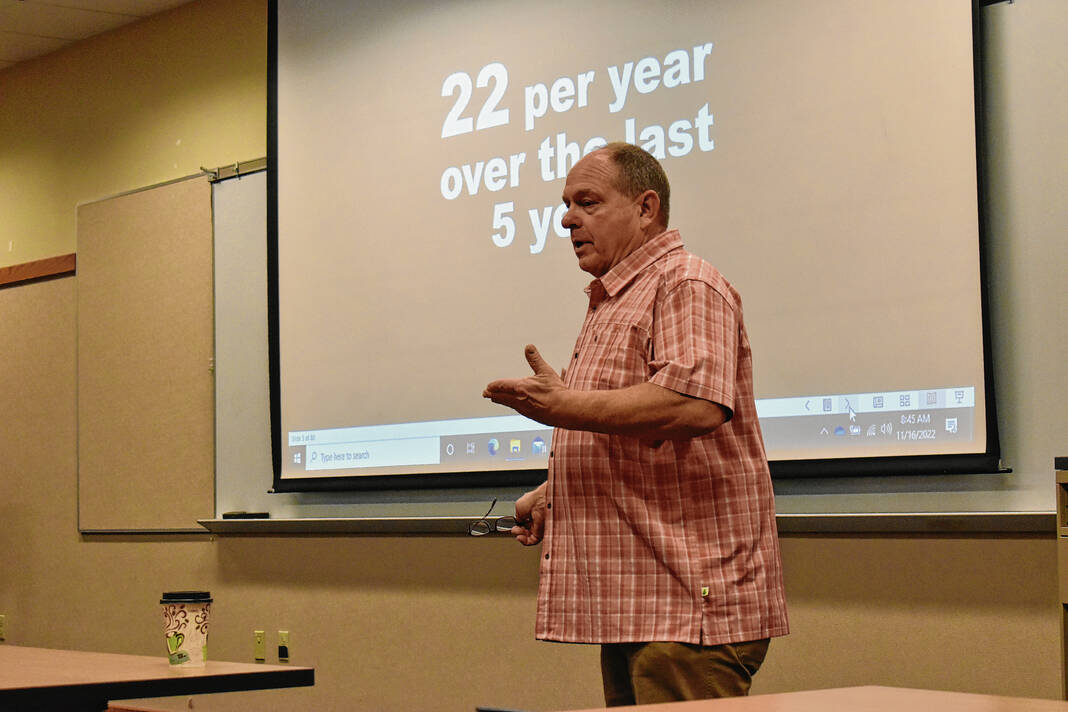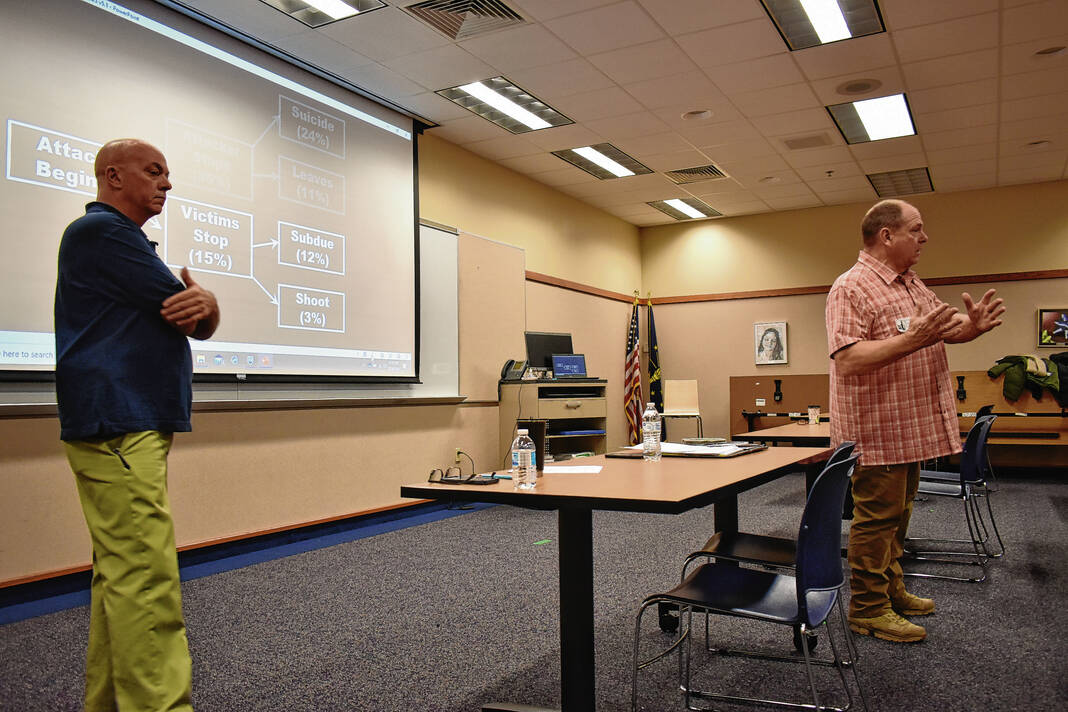
Retired Johnson County Sheriff's Deputy John Rourke shares tips to deal with active shooters during a training session Wednesday at Franklin Community High School.
Noah Crenshaw | Daily Journal
As part of a three-hour training session on Wednesday, representatives from local businesses and organizations learned what they can do to prepare for an active shooter.
Aspire Johnson County, the county’s chamber of commerce, held the first of two active shooter and workplace violence training sessions in the large group instruction room at Franklin Community High School on Wednesday. Seventeen people representing local businesses and organizations, along with the chamber, listened to John O’Rourke, a retired Johnson County sheriff’s deputy, and Lin Hunt, a Bargersville police officer, giving training on prevention and responses to active shooters and other workplace violence.
O’Rourke was hired by the Johnson County Sheriff’s Office in 1993 as a corrections officer at the county jail. Two years later, O’Rourke was hired by the Bargersville Police Department, where he spent 12 years, almost eight of those years as the police chief. He later returned to the Johnson County Sheriff’s Office in 2008 before retiring. He has been involved in several active shooter training sessions over the years and received a certificate of training from Texas A&M.
Wednesday’s program focused on myth versus fact, what to expect from police response and steps for survival. One of the first things discussed was armed citizens, which was of interest to many in the room because of the Greenwood Park Mall shooting.
When it comes to guns, training is very important. People need to be trained in how to handle stress, as fine motor skills go out the window, Hunt said.
People also need to make sure to use PEDA thinking. PEDA stands for perceive, evaluate, decide and act, and in active shooting situations, this is exactly what people should do, he said.
“There’s a lot happening before you’re even able to pull that gun and decide what you’re going to do, or a knife or whatever you use,” Hunt said.
Active killers would have already perceived, evaluated and decided what they are going to do in these situations. The public, however, has to quickly go through the full PEDA acronym in order to act to save their lives, O’Rourke said.
Active killers is a more modern term for active shooters. Law enforcement are moving away from the active shooter term because people can be killed in different ways, he said.
“Someone’s yelling — they could be getting stabbed and beat with a bat, a pipe, anything where police need to take immediate response to them, a car running over them — so active killer just encompasses it all,” O’Rourke said.
If an armed citizen does shoot the active shooter, they should make sure to not be armed when the police arrive, he said.
“If you are carrying a weapon when the police get there, put that weapon down on the ground, palms up,” O’Rourke said. “If you don’t, you’re probably going to get shot.”
Later, O’Rourke and Hunt discussed the police response and what factors into it. When the police arrive at the scene of an active killing incident, their first priority is to stop the killing and not immediately help those who have already been injured. Once the threat has been neutralized, then responders will work on helping and evacuating those who are injured, O’Rourke said.
People should make sure to follow commands, show their palms and not move unless told to by police, he said.
If members of the public find themselves in an active killer incident, it’s important to get into the mindset of running, hiding or fighting, O’Rourke said.
“Run. If you can’t run, hide. If you can’t hide, fight, and fight like your life depends on it because it does,” he said.
When hiding from an active killer, people should try to barricade the doors with as heavy an object as possible. When fighting, they should get into a position to fight with whatever they have and try to grab the killer’s weapon. They also need to be prepared to eliminate the active killer if necessary, O’Rourke said.
People should also make sure to always be aware of their surroundings. They should know where the exits are, who is coming and going, and pay attention to people who may seem out of place, he said.
Another key thing to keep in mind is to not name the active killer or killers. People can call them whatever they want, but just don’t use their actual name, O’Rourke said.
“Don’t name them. Don’t give them that credit,” he said.
The second training session will take place at Greenwood Public Library on Nov. 30.
TRAINING TIPS
Here are some tips about what to do in an active shooter or workplace violence situation:
- If something looks wrong or feels wrong, leave.
- Know where the windows, stairs and exits are located.
- Use Run, Hide Fight (Avoid, Deny, Defend).
- Stay out of doorways.
- Do not lay down and “play dead.”
- Know how to activate the sprinkler system to obstruct the attacker’s vision. A fire extinguisher can also be used.
- Get behind cover that can stop a bullet.
- Learn first aid.
- Wait until safe before calling 911.
Source: Aspire Johnson County Tipsheet
IF YOU GO
Active Shooter and Workplace Violence Training
What: A training program on prevention and response to active shooters and other workplace violence hosted by Aspire Johnson County. John O’Rourke, a retired Johnson County sheriff’s deputy, will lead the training with assistance from Jeremy Pell, White River Township fire chief.
When: 1:30 to 4:30 p.m., Nov. 30
Where: Greenwood Public Library, 310 S. Meridian St., Greenwood
Cost: Free with online registration. To register, go online to https://aspirejohnsoncounty.com/events/ and search for the Nov. 30 event.


